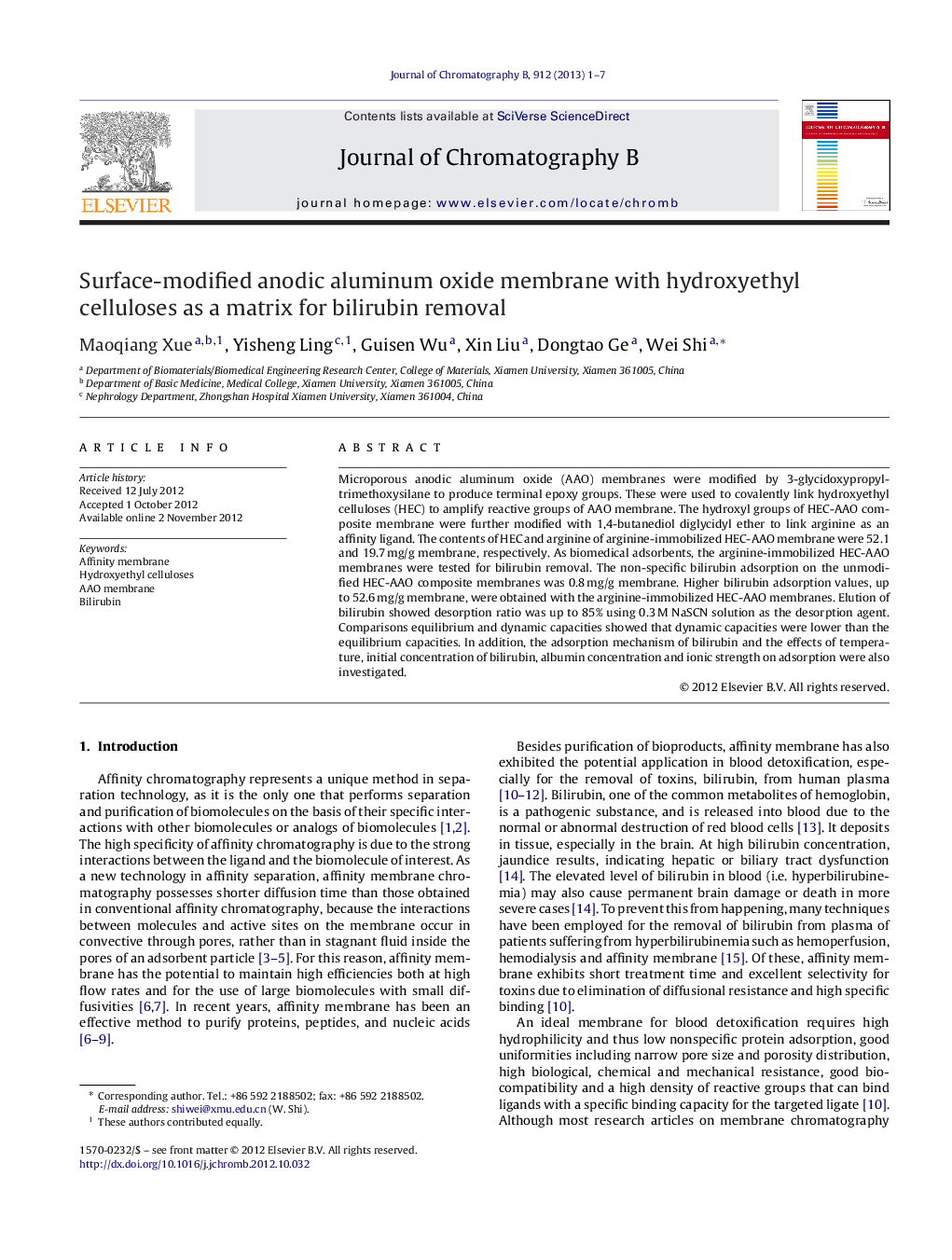| Article ID | Journal | Published Year | Pages | File Type |
|---|---|---|---|---|
| 1213612 | Journal of Chromatography B | 2013 | 7 Pages |
Microporous anodic aluminum oxide (AAO) membranes were modified by 3-glycidoxypropyltrimethoxysilane to produce terminal epoxy groups. These were used to covalently link hydroxyethyl celluloses (HEC) to amplify reactive groups of AAO membrane. The hydroxyl groups of HEC-AAO composite membrane were further modified with 1,4-butanediol diglycidyl ether to link arginine as an affinity ligand. The contents of HEC and arginine of arginine-immobilized HEC-AAO membrane were 52.1 and 19.7 mg/g membrane, respectively. As biomedical adsorbents, the arginine-immobilized HEC-AAO membranes were tested for bilirubin removal. The non-specific bilirubin adsorption on the unmodified HEC-AAO composite membranes was 0.8 mg/g membrane. Higher bilirubin adsorption values, up to 52.6 mg/g membrane, were obtained with the arginine-immobilized HEC-AAO membranes. Elution of bilirubin showed desorption ratio was up to 85% using 0.3 M NaSCN solution as the desorption agent. Comparisons equilibrium and dynamic capacities showed that dynamic capacities were lower than the equilibrium capacities. In addition, the adsorption mechanism of bilirubin and the effects of temperature, initial concentration of bilirubin, albumin concentration and ionic strength on adsorption were also investigated.
► An affinity membrane for bilirubin removal is fabricated using anodic aluminum oxide membrane as matrix. ► The affinity membranes have precise pore structure and narrow pore size distribution. ►The affinity membranes exhibit high adsorption capacity for bilirubin.
